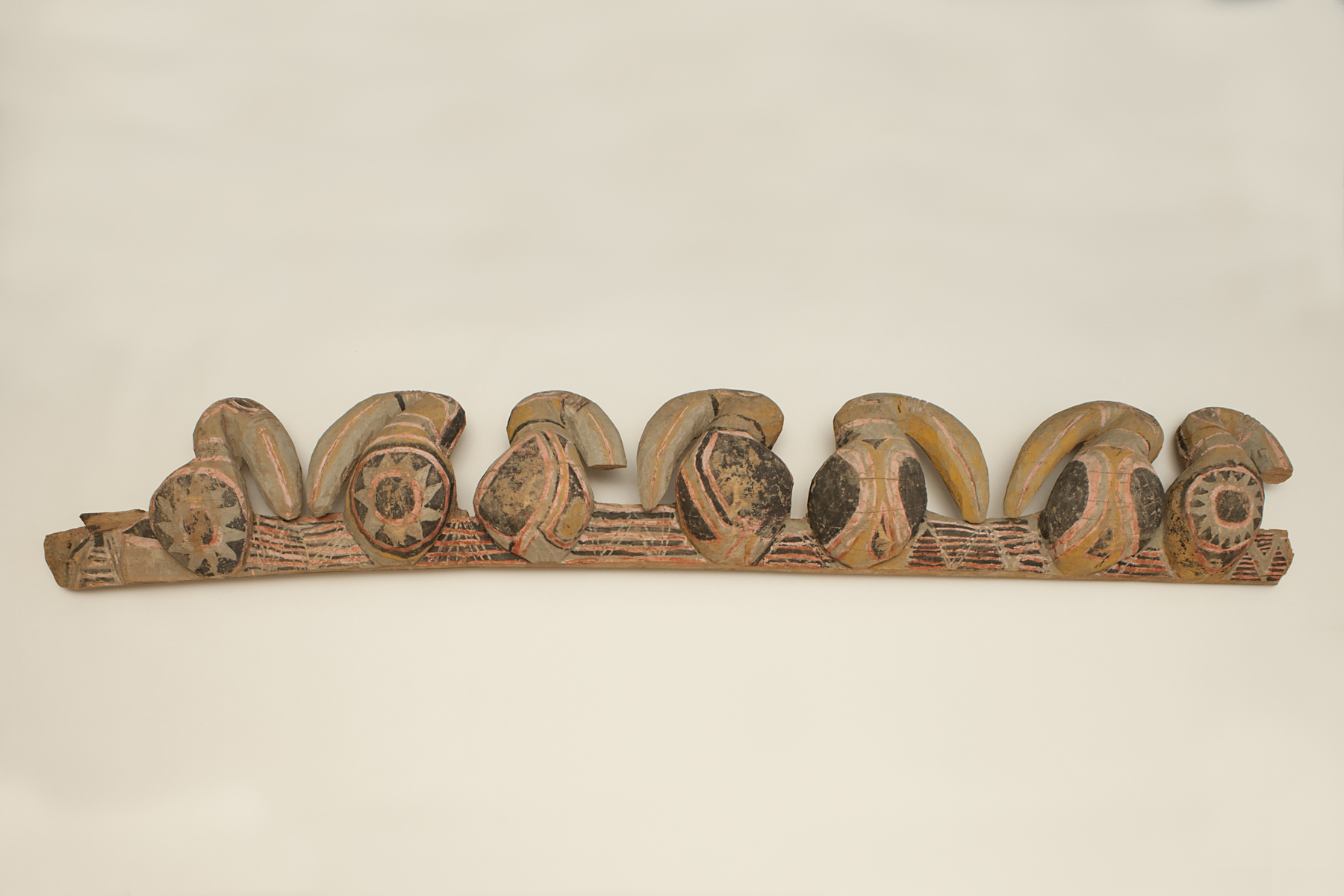portion of a lintel with hornbill birds, unrecorded Abelam artist
Artwork Overview
unrecorded Abelam artist, artist
portion of a lintel with hornbill birds,
1850s–1969
Where object was made: East Maprik, Papua New Guinea
Material/technique: pigment; clay; carving; wood
Dimensions:
Object Height/Width/Depth (Height x Width x Depth): 30 x 218 x 19 cm
Object Height/Width/Depth (Height x Width x Depth): 11 13/16 x 85 13/16 x 7 1/2 in
Object Height/Width/Depth (Height x Width x Depth): 30 x 218 x 19 cm
Object Height/Width/Depth (Height x Width x Depth): 11 13/16 x 85 13/16 x 7 1/2 in
Credit line: Gift of Dr. and Mrs. Franklin D. Murphy
Accession number: 1977.0026
Not on display
If you wish to reproduce this image, please submit an image request





